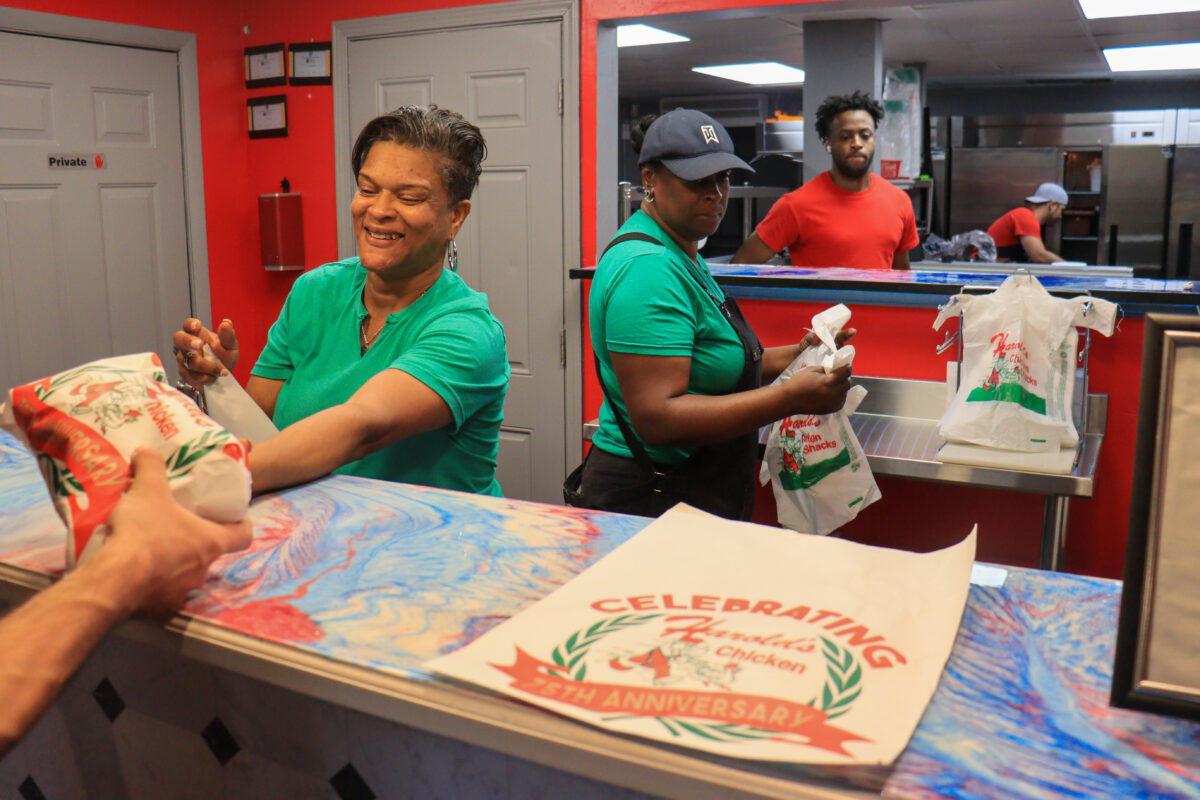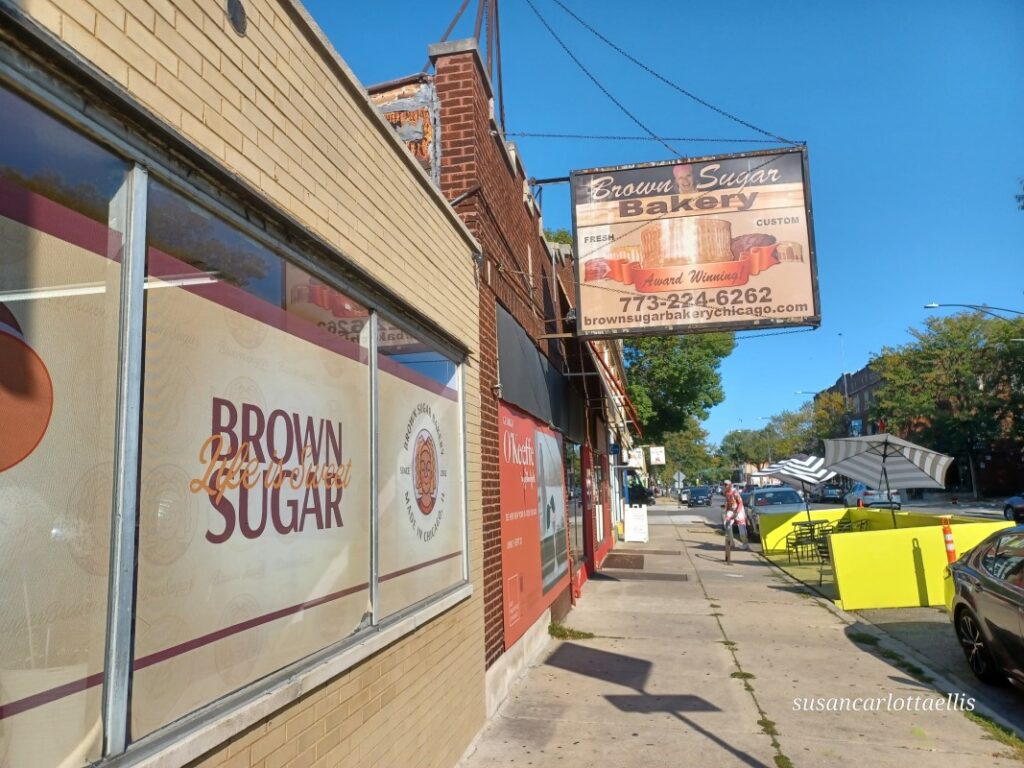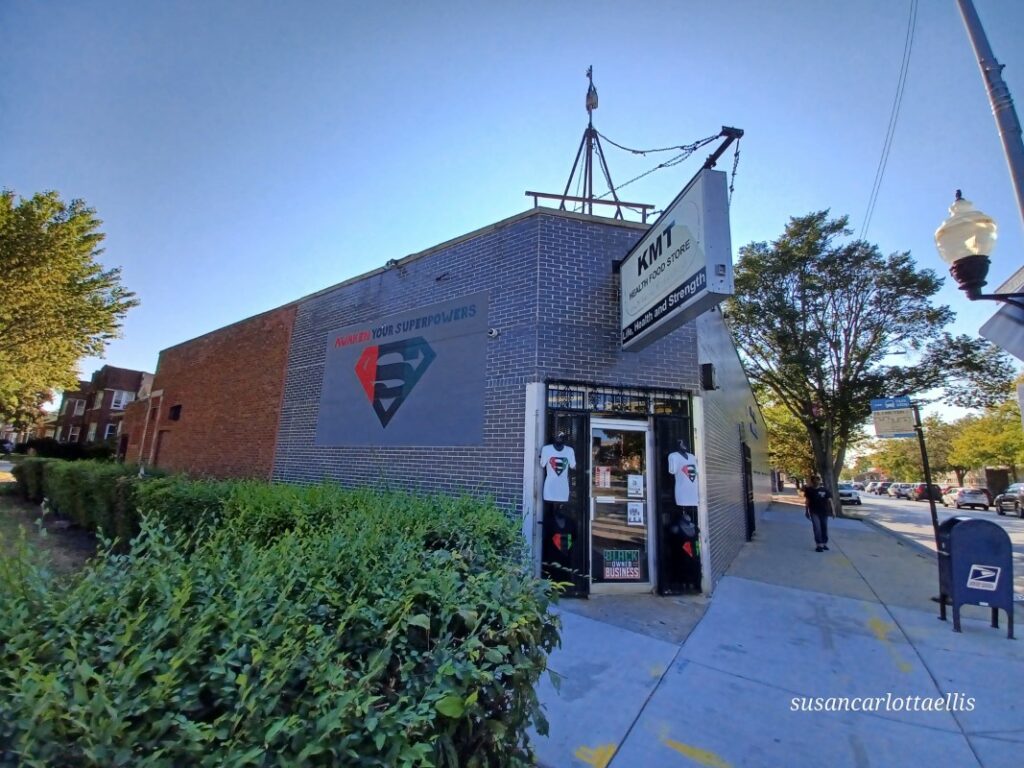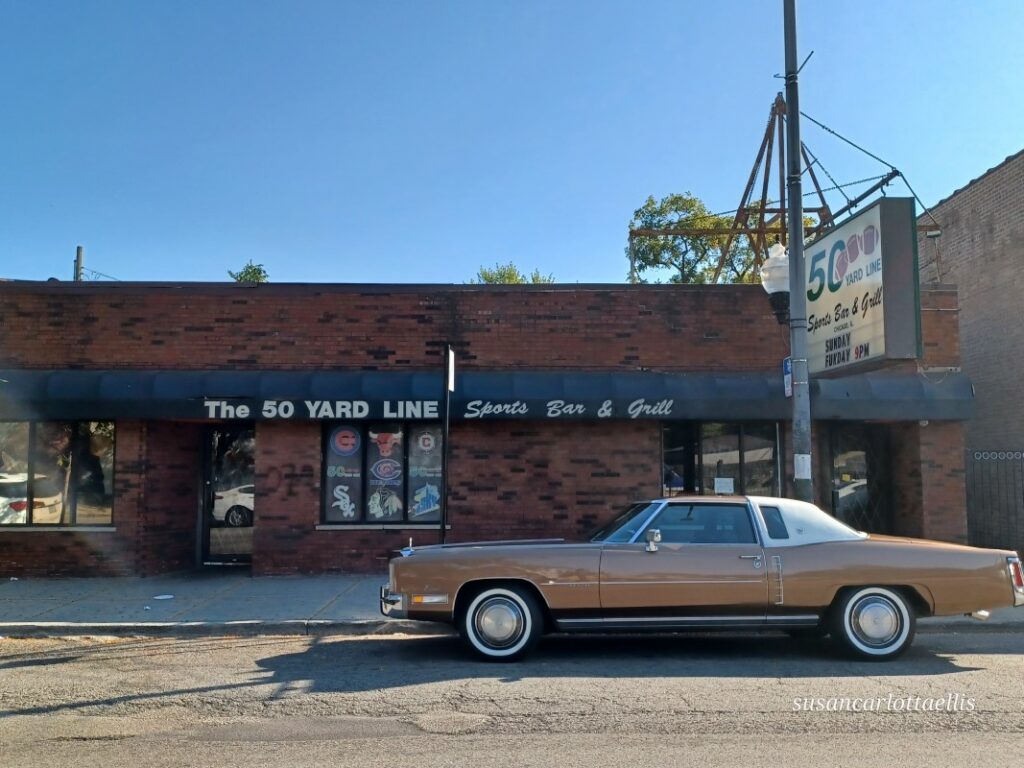When someone refers to the South Shore Country Club as the “South Shore Cultural Center,” I immediately make one of two observations about them:
- They are the opps.
- They are not from South Shore.
There’s a stark difference between folks who grew up in South Shore and those who live in South Shore.
The latter tend to see little more than the lake and a decent commute to downtown. Meanwhile, folks who grew up in the neighborhood see something completely different.
We see the lakefront areas like Bongo Beach (63rd Street Beach House), the area behind the Country Club, and Rainbow Beach as an opportunity for not only leisure activity, but also a respite from life’s trials and tribulations.
And, perhaps most importantly, the lakefront breeze over east is like none other.
My maternal grandparents, cousins, cousins’ children, aunts, uncles, and other family members lived and died in South Shore. I’m connected to the neighborhood, and the neighborhood is connected to me.
No doubt our hood has had some issues over time. I tell folks that South Shore is probably one of Chicago’s most diverse neighborhoods—not in the way most people would readily recognize.
79th and Exchange, 67th and Jeffrey, 75th and Yates, 79th and Stony Island, and 69th and Constance are completely different intersections characterized by gas stations with liquor stores vibes around the corner from home prices that start at $500,000.
Our biggest battles in South Shore are, in my humble opinion, probably not what you think.
Violence? I’m not mad at you.
Poverty? Sure.
Disinvestment? I won’t hold you.
Gentrification? South Shore is cheaper than Hyde Park, though.
Neighborhood Karens? Them too.
For instance, remember the 2023 reaction to then-Mayor Lori Lightfoot’s plan to house migrants within the old South Shore High School?
Some of my neighbors yelled the following:
“Send them back.”
“Close the border.”
“We don’t want them here.”
Another person held up a sign saying, “Build the wall 2024.”
If someone has lived in the neighborhood long enough, they may remember the things white people said and did to Black folks when we first came to South Shore. According to Becoming, the memoir written by former First Lady Michelle Obama née Robinson, our neighborhood’s most famous former resident, South Shore went from 90 percent white to 90 percent Black within a thirty-year period (1950–1980).
In the book, she says, “One by one, they packed their bags and they ran from us.”
My mother collects blackface figurines. Guess where she found some of them? In South Shore. I asked her once why she collected them and why they were displayed near the front door. She said that she wanted to let me know that this is what the world thinks of Black people.
Seems like my mom and Mrs. Obama was talking about the same people.
My neighbors who showed up that night to protest the possible use of the old South Shore High School for migrants weren’t entirely wrong regarding their belief that migrants are getting preferential treatment to Black folks. America has a long history of dumping its problems on Black communities under the guise of the common good.
Moreover, people in the neighborhood had been asking for years for the building to be made into a community center.
Instead of listening to the community, the city gave the building to the police.
Last year, I found myself in the midst of a social media debate with some South Lakefront Karens who are extremely vocal and believe in shaming people for parking near bike paths by taking photos of alleged offenders and posting them to X, formerly Twitter.
Also, some of these critics would like to get rid of cars despite knowing that their Black neighbors have to travel the farthest for education, employment, and amenities.
As you can imagine, the conversation went left when I told them that they were knowingly deputizing themselves in the absence of law enforcement, whose history has its roots in slave patrols and protecting property.
I still say it’s ok to speak with our neighbors. If I, as a reporter, can go knock on the door of a police officer in a neighborhood with a history of terrible behavior toward Black people who was involved in the shooting of a local barber (Harith Augustus) that sparked neighborhood protests, I think the South Lakefront Karens can engage in a civil conversation with their Black neighbors to work out differences.
Gwendolyn Brooks, one of my personal heroes, said it best: “We are each other’s harvest; we are each other’s business; we are each other’s magnitude and bond.”
As much as I love the neighborhood, I, like many Chicagoans, venture out to see what the rest of the South Side has to offer. The places I’ve identified below mean a lot to me.
Maybe you’ll check them out for yourselves one day.
Best Place to Buy Cigars and Eat Fried Chicken: NoLo’s Cigar Lounge and Harold’s Chicken Shack, No. 69 – Jeffrey Manor
There’re not many places in the city where one can order a six-wing fried hard with mild sauce and go next door to get a maduro cigar. In the Jeffrey Manor neighborhood, two of my favorite things to do—smoke cigars and revel in a Chicago delight—are right next to each other.
NoLo’s Cigar Lounge, a Black–owned business, is next door to a Harold’s Chicken location At 99th and Torrence. For Black folks, seeing our dollar staying in the areas we shop in means everything. Like other areas of the city that have nightlife and other amenities, this part of the South Side should be able to enjoy things close to home.
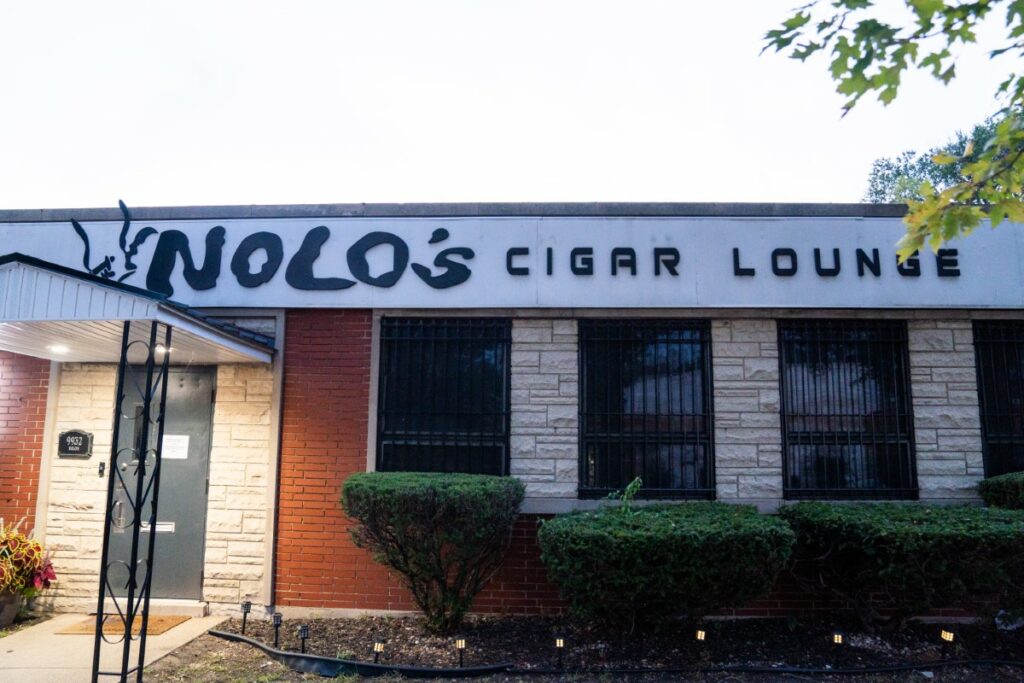
To be honest, at times, it can be an expensive habit. However, a lot of folks have no problem shelling out their disposable income if the business has the community’s best interest at heart.
NoLo’s clientele represent professional Black folks from all walks of life. That may sound like any other cigar shop, but many of these folks are often looking for amenities outside of Hyde Park, downtown, and the surrounding suburban areas.
Cigar shops are welcoming spaces to begin with. What makes NoLo’s a bit different is that they often host pop-up events expanding the visibility of Black-owned businesses throughout the Chicago area.
Lori Shelby-Conley, co-owner of NoLo’s with her husband, Nolan Hardy, says the space, which has been open since 2023, serves multiple roles; it’s a place where professional Black folks can unwind, and it can be the spark for someone in the surrounding community to not only see a Black-owned business, but become an entrepreneur themselves.
“We wanted to go into a business, but we wanted to do something that we both enjoyed, so we figured, why not open the cigar lounge? We both smoke cigars,” said Shelby-Conley, a social worker by trade. “It’ll be a great thing for us to have somewhere in the community that we come from and that we live in for people to come enjoy themselves, feel safe and secure, have a great cigar, have a coffee, or whatever it is they might want to do….
“I feel it’s important for Black dollars to circulate in our communities. We have to be able to support and have things where we can buy in this area, whether it be someone doing a pop-up, or whether it be someone opening a brick-and-mortar store. We want to be able to circulate our dollars here, so if I can provide a space for people to sometimes come and say: ‘Hey, you’re having an event. Can I sell my cupcakes?’ Sure, it’s not a problem, because we want to be able to promote those businesses so they can move forward to do bigger things, as I’ve had the opportunity to do with this space.”
Also, having Harold’s Chicken Shack, one of Black Chicago’s most well-known brands, as a next-door neighbor is something NoLo’s isn’t mad at.
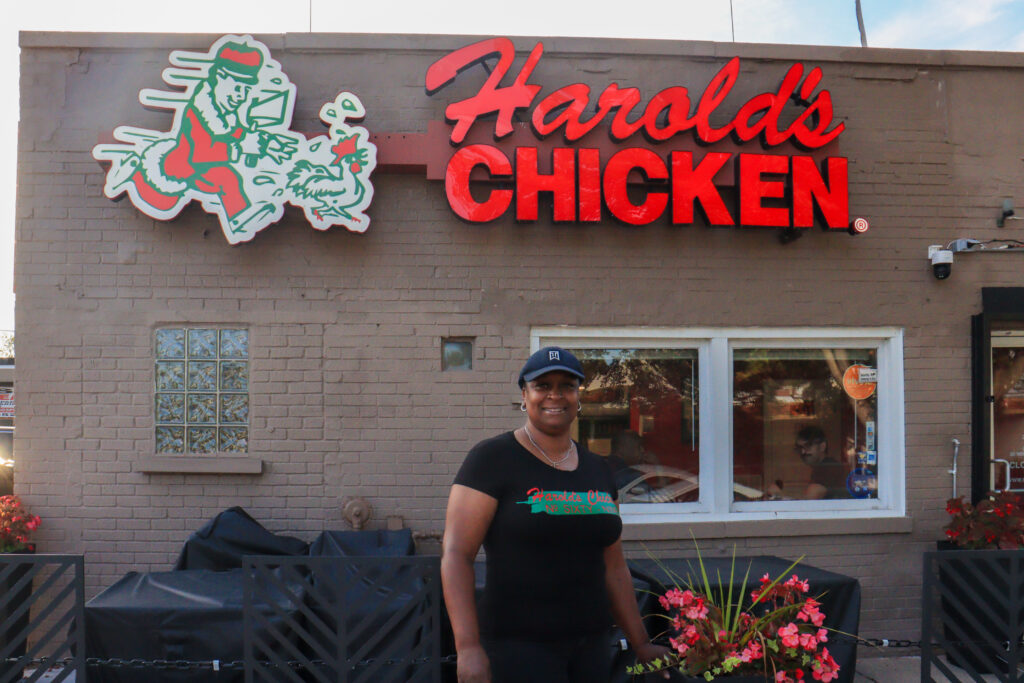
“A lot of my patrons, of course, come here, and then they go there to support [Harold’s] as well. And we look out for each other. So I want to say every business on this particular block looks out for each other, not just Harold’s Chicken,” Shelby-Conley said.
“We have Skyway Bowl, who’s a staple in the community. We have the [East] Odyssey Lounge. So we all try to make sure that we support each other, whether it be something as small as getting a package that’s been delivered out the front door… we all try to support each other and what we’re doing here on Torrance.”
NoLo’s Cigar Lounge, 9932 S. Torrence Ave., Monday and Wednesday, 5pm–9pm; Thursday, 5pm–10pm; Friday, 5pm–midnight; Saturday, noon–midnight. (773) 359-2474. facebook.com/profile.php?id=100090951978483
Best Place to Hold Space for the People Who Helped You Along the Way: Gwendolyn Brooks Park – Kenwood
A person I talked to on the phone for a few minutes as an eighth grader and met briefly continues to have a profound effect on my life. Pulitzer Prize–winning poet Gwendolyn Brooks called my house one day to tell me that I had won a poetry award. Even though I didn’t pick up writing until decades later, she’s the catalyst that led me to become an award-winning reporter and author.
Going to Ms. Brooks’s statue and having a seat at the park is an emotional experience for me. She saw something in me that I didn’t know existed.
I close my eyes and think about the people around me who helped me to succeed. Friends, family, neighbors, childhood friends, fraternity brothers, and random people whom I’ve met over time who believe I’ve amplified their voices. Before I know it, I start to cry.
You never want to let down the people who invested so much into you. The weight is heavy.
I often wonder what she saw in my writing. Admittedly, I didn’t put a lot of effort into what I wrote. I wrote what I experienced in my neighborhood.
Sometimes the simple route is the best way to convey one’s emotions.
Lifelong friendships forged through our amazing, depressing, heartbreaking, beautiful city that often overlooks the marginalized. I described what I was seeing and feeling. I recently ran into one of my childhood friends who was taking a trip down memory not expecting to run into someone he knew. We talked about old times, and how he’s leaving the city to get away from the violence. Can’t say that I blame him. The city we grew up in and the city we now live in are two different places.
Artist, author, and CEO Leslé Honoré believes the park and Brooks’s legacy are intertwined.


“I think honoring Gwendolyn in that way pays homage to what she wrote about, which was everyday Chicago life that sometimes people overlooked as not important or not worthy of celebration. So I just love that is one of the many ways that we can honor her, by taking a moment to sit and think and observe and be a part of and be connected to,” Honoré said. “It doesn’t have to be these grandiose ways that deepen our connection, but the small ones that create permanency and legacy—that’s what I think of.”
“I think it was just the truth in storytelling and the truth in our voices” that touched her about Brooks’s work, Honoré said. “I think often when we are studying English literature or poetry, we’re often studying people whose voices aren’t our own, and don’t sing our songs and tell our tales. And so, beyond all of the accolades that she has like the first African American to receive a Pulitzer [Prize], doing so at a time when our value as whole people was still in question.”
Honoré, an accomplished poet, says it’s best for visitors to document their thoughts when in Gwendolyn Brooks Park.
“I would encourage [visitors] to write there, to sit, to spend a moment and write what you see, what you feel, how you feel in that space. Honor that legacy of creating in that way, and do it more than once,” Honoré says. “Do it during different seasons and different times of the year. See how it changes and how it doesn’t. How you change and how you don’t when you enter that space.”
Brooks (Gwendolyn) Park, 4542 S. Greenwood Ave., Monday–Sunday, 6am–9pm. (312) 747-7138. chicagoparkdistrict.com/parks-facilities/brooks-gwendolyn-park
Best Place to See A Friendly Schism in the Black Community: High School Reunion Alumni Pics
Should’ve been a Mustang.
Should’ve been a Bronco.
Should’ve been a Dolphin.
Should’ve been a Jaguar.
Black South Side Chicago is a small place. One can tell a lot about a person based on where they attended high school.
Whether we attended a public school, Catholic school, private school, or charter school, the conversation usually goes like this:
Where did you go to high school?
Kenwood.
My cousin went to Kenwood. Did you know Larry? Tall. Light-skinned.
Yeah, him and my homegirl used to go together.
During the summer months, peak alumni picnic season, graduates of these schools will proudly boast about their high school alma mater while playfully disrespecting anyone who attended other schools. Online, I’ve witnessed sneak dissing, subbing, and blatant disrespect.
In my case, I went to my high school alma mater (Morgan Park) for my junior and senior years. Anytime I’ve met a fellow Mustang, they treat me as if I attended all four years.
At MP, I met my best friend and people I’m still tight with today. Unfortunately, each year there are less and less of us due to folks passing away. Any time Mustangs and the alumni of other schools get together, a time is had. We often share stories, show pictures of our kids, tell each other how proud we are of them, and see if that guy or girl who curbed us still looks good.
Also, every time I see a fellow Mustang, whether we knew each other back then or not, they say they’ve seen my rise over time as a respected writer and author, and they say how proud they are of me. Affirmations like that mean a lot.
This is my response to folks who say to leave high school where it was—in the past. I think it’s bigger than saying everyone mostly went to at least high school. Shared experiences are transformative.
A couple of years ago, I was visiting Washington, DC, and I ran into a Morgan Park alumnus who was a manager at a hotel I stopped in while eating lunch. Back then, we weren’t friends by any means. However, he treated me as if we were; he bought my book.
I think he showed hospitality because we had a shared experience. We’ve been cool ever since.
South Side born and raised Gator Bell graduated from Hyde Park Academy, now known as Hyde Park Academy High School, in 1996. (Hyde Park is my father’s alma mater).
Bell says he loves seeing the high school alumni discourse. He believes that the playful discussions keep Chicagoans connected to each other.
“I love it because even though a lot of us moved on… it’s still that connection with the hometown, with the neighborhood of how we became who we are as adults,” Bell said. “Reestablishing those connections with some of our classmates and some of our school members and making sure those institutions—those high schools—are still connected.”
“High school is definitely one of those formative years—those times in a person’s life where you start to get to become who you are as a person, and figuring out where you want to go or what you want to become,” said Bell. “But it’s not like where you just reinvent yourself. You’re actually growing into yourself. You’re becoming the person who you think you want to be. And so when somebody says, ‘Where’d you go to high school,’ especially with Chicago, it’s like, okay, so it’s kind of like your background, but it’s more.”
Bell, a higher education administrator by trade, says the connections Chicagoans have to their high school alma mater are personal. Especially when meeting someone who went to the same high school you did.
“I meet somebody from Hyde Park. I ask, ‘Did you play football? Did you hoop? Were you in ROTC? What was your division classroom? Or, even better, what bus did you take to get [to school]?’”
Best Place to Go for a Long Drive: Longwood Drive Historic District – Beverly
I discovered Longwood Drive as a student at Morgan Park High School. I had some friends who lived in the neighborhood. The times I was able to drive my dad’s car—an Oldsmobile Cutlass Ciera—I’d pick up my friend, and we’d head to school via Longwood Drive. Over time, when I would be in the neighborhood, I would go for a drive just ’cause.
I’m a big history buff who’s a novice architecture fan. I like seeing things: how things are, and how they used to be. What happened? Why is there a church in a castle? That’s a cool place to visit. Why are the driveways so spacious? Why is it so quiet in Beverly?
Sometimes a nice drive calms the nerves. This was something I did pretty frequently when the COVID-19 pandemic shut things down. Being able to take a ride during an extremely unsure period of time was something I relied on to level off the depression and anxiety the pandemic brought upon us all.
If you’re out and about in Beverly, I suggest taking a ride down Longwood Drive.

The street is a part of a historic area where architecture nerds revel in the size and style of the homes from 98th Street to 110th Street.
Scott Smith, the host of The Frunchroom, a locally based storytelling series, says folks who can take a ride through Beverly will eventually end up on Longwood Drive nerding out about what they are witnessing.
“Longwood Drive is basically like driving through Chicago history, specifically the sort of late 1800s, early 1900s. If you are a fan of architecture, it’s got all these different kinds of styles. They’ve got Queen Anne homes that everybody really points to, but it’s got all these other examples of great architecture,” said Smith. “There’s a really incredible Frank Lloyd Wright home up on the hill….. It’s probably one of the big highlights of driving down there. And then there is the Horton House…. It was built by this guy who ran Chicago [Bridge & Iron] for a long time.
“So it’s all these folks who would be able to have famous architects designing their homes, or were these kind of captains of industry, all had houses there.”
Smith says Beverly, along with the architecture on Longwood Drive, fuels a part of the city that is vibrant and interesting, highlighted by the scores of city workers—police officers, firefighters, and teachers, along with elected officials—who call the neighborhood home.
“I think sometimes if you grow up in a certain part of the city and you have a certain view of it, it’s hard to understand that there’s a different way of living. And I think being a city of neighborhoods, it’s important to remember that there’s all kinds of different places and experiences in Chicago,” Smith said.
“Beverly has a very long history, and it’s sort of fueled a part of the city of Chicago because of how much it has city workers and how many people who live here have been involved in politics or running the city in some way. So I think it’s worth knowing for that reason, because it does illuminate a part of the city of Chicago that most people might not be familiar with.”
Longwood Drive Historic District, 9800–11000 blocks of S. Longwood Dr. and 10200–10700 blocks of S. Seeley Ave.
Best Place to See the Black Dollar in Action: 75th Street Business Corridor – Grand Crossing and Chatham
The 75th Street Business Corridor represents the best of Black-owned business in Chicago touching the lives of Black folks in one way or another.
You may have heard about the heavy pour at President’s Lounge. The barbecue at Lem’s Bar-B-Q. The vegan food options at Soul Veg City. Maybe sign up for cycling classes at Bikettle? Pick up a caramel cake from Brown Sugar Bakery? Or check out the 50 Yard Line, a local lounge for a drink or dancing?
Either way, the Black dollar rarely leaves the community when done right.
For instance, during a recent Friday evening, me and my significant other celebrated her birthday by visiting a new restaurant, Nafsi, that opened up within the Country Club. I live close enough so we walked over. After dinner, we stopped by the beach to take in the last night of South Shore Social Beach Club’s Summer House Music Series.
Hundreds of beautiful Black faces were feeling the vibes of their favorite house tracks while grilling, smoking cigars, eating, dancing, and enjoying fellowship. Once we left the beach we walked down 71st Street, and we discovered a blues concert within the Crandon Community Garden.
Looking back at the experience, I enjoyed the amenities in my community. And, perhaps more importantly, my dollar circulated within three blocks.
Slowly but surely, I’m starting to see more sit-down restaurants in the area. In the past, it’s been tough to name many outside of a handful.
South Shore resident and program director for Real Men Charities (known for its “Real Men Cook” celebrations) Rael Jackson, who helms several roles at The Quarry, a local event space connected to Real Men Charities, wants the same sense of business acumen for the neighborhood that the 75th Street Business Corridor displays.
He says our neighbors to the west in Grand Crossing and Chatham are showing South Shore the way. “South Shore has so many Black professionals, but we all in silos—like most of our communities are people in silos. They go to work, they come home, pretty much in their home,” said Jackson. “But we have all these doctors, lawyers, judges in the area, and we all need to come together because I think a lot of that money, I heard it was $52 million worth of leakage that’s going toward downtown restaurants because we don’t really have any prominent businesses, but we see them growing.
“We already know Chatham was one of the best areas of Chicago where people move,” Jackson said. “That’s where the Black professionals were at. That was the place to go to raise a family; it was safe, it was insular. And then when the eighties came and that drug money came in, and a lot of the violence was created, it really sort of started to destroy the fabric of the community. And [today] to be able to have a walkable space, to have people be able to walk to get food, be able to get healthy food from Soul Veg, be able to get the barbecue from Lem’s…
“I think Chatham really planted a seed of growth. And you see it all over there. You see the energy. You see the people out on the street… And so when people can come out, interact with each other, that’s when true community is created, because it’s no community if we’re not communicating.”
75th Street Business Corridor, (in my opinion) Cottage Grove Ave. to State St. blocks of 75th St.

